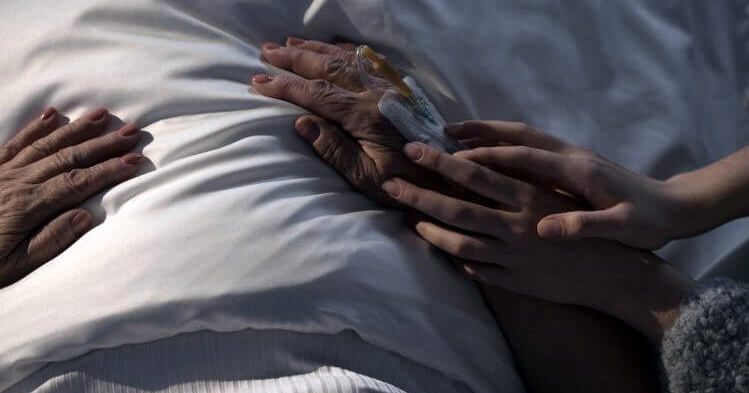
By Grace Birnstengel for Next Avenue
(This article is part of the Living to the End of Life Special Report, and part of a special report for The John A. Hartford Foundation.)
If you have a loved one in hospice, you may dream of having one final conversation or connection with him or her. For many, that wish becomes a reality, but it can come strapped along with confusion or false hope.
“Terminal lucidity” refers to the phenomenon of someone briefly perking up before death. The term was coined by biologist and researcher Michael Nahm and is now more commonly called an “end-of-life rally.” These rallies show up differently for different people, but many who have them temporarily improve and ask for a last request, like a specific food or to see a certain loved one before the end.
In a recent New York Times story about end-of-life rallies, writer Judith Matloff featured the story of 75-year-old Susan Linnee who was in hospice, dying of a brain tumor. Seventeen days into her stay, she “perked up” and asked for dill pickles, liverwurst and seed bread.
“Relatives fetched the delicacies and she nibbled a few bites,” Matloff wrote. “More animated than in previous days, she engaged in lucid conversation. Soon thereafter, she slipped into a barely responsive state and died two weeks later.”
A Speculative Understanding at Best
Matloff interviewed Dr. Craig Blinderman, director of adult palliative medicine at the Columbia University Medical Center, who said that little to no evidence-based data exists around end-of-life rallies.
“Aside from the challenges of catching dying people at the moment of springing back, it’d be tough to get the medical ethics board to determine that the research would benefit the patient,” Matloff wrote. “This type of study would require constant drawing of blood and monitoring of patients, which runs counter to the quiet fade away that is a signature element of palliative care.”
Because of this lack of knowledge and research, not much is known about what causes end-of-life rallies and why some experience them while others don’t. For the most part, these rallies remain a mystery.
Blinderman has one theory, though. When organs fail, he says, they can release a “steroidlike compound.” This compound could potentially wake up the brain enough to carry out the miraculous-seeming comeback.
The Times story also featured insight from John Mastrojohn, executive vice president of the National Hospice and Palliative Care Organization, who thinks that perhaps the calming and socially-supportive structure of hospice care is more inviting for a rally than a sterile hospital situation where a person is being kept alive by drugs and machines.
But there seems to be something more at play.
“Then there’s a spiritual or psychological component, which defies scientific explanation,” Matloff wrote. “Hospice professionals note a compelling desire to say goodbye or bond with loved ones in those last moments. There’s no way to test this hypothesis, but there’s no way to falsify it, either.”
Navigating an End-of-Life Rally
End-of-life rallies are more common than you might think. If you’re taken by surprise by a loved one’s final moments, palliative care experts encourage accommodating the request “no matter how odd it may appear,” according to the Times.
Live With Care, a project of Westchester End-of-Life Coalition in Bronxville, N.Y., also published some advice for handling a respite. These tips include:
- Follow the lead of the person who is dying
- Listen carefully and respond to his or her needs for conversation (being silent, talking about the past or future or asking for final goodbyes)
- Don’t be surprised or disappointed if, shortly after a lively time, all of the person’s energy seems gone
- Regardless of how alert — or not — your loved one is, you can offer support by sitting by the bedside and holding a hand or stroking an arm
